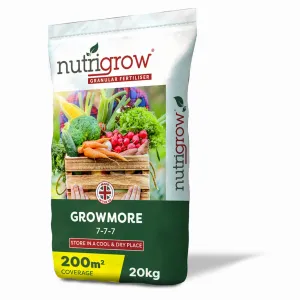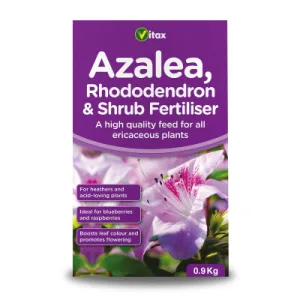Trees are truly amazing. From their carbon storing credentials to their place in our cultural heritage, trees significantly contribute to our biodiversity, scenery, well-being, and economy in so many ways.
Looking after them effectively will pay dividends – not least in ensuring their health and longevity, and your enjoyment of them. So whether you’re tending an orchard, woodland, or a single specimen tree in the garden, what’s the best way to start thinking about their nutritional needs?
In this guide, we’ll take a look at some of our most common native and ornamental species.
UK Native Trees
The nutrient requirements for most UK native trees are generally met by the soil and the forest or woodland ecosystem in which they reside.
This means that most mature native species rarely require nutritional intervention other than on occasions where they show specific signs of deficiency, to aid recovery following impacts of some diseases / fungal infections, or to give them a solid grounding when planting.
If you are lucky enough to be the custodian of mature native species, it’s worth understanding that their nutrient preferences relate to the type of soil they grow in – particularly the pH levels and organic matter content. These aspects dictate nutrient availability.
Take a look at the following table showing the nutrient preferences of some of our most common native species.
Tree Species |
General Nutrient Requirement / Preference |
Key Soil Conditions |
| English Oak Quercus robur | Moderate to high. | Prefers slightly acidic to neutral soil (pH 6.0-7.0); requires good organic matter and well-drained loam. Doesn't tolerate waterlogging. |
|
Ash Fraxinus excelsior |
High (very site-demanding). | Thrives on moist, fertile, deep and rich soils with a high nitrogen content, often over calcareous (alkaline bedrock; requires pH 5 or above. |
| Beech Fagus sylvatica | Moderate to high. | Prefers neutral to alkaline (chalky/calcareous) soils that are well-drained and fertile. They are sensitive to compacted, waterlogged, or very dry conditions. |
| Common Alder Alnus glutinosa | Low to moderate. | Exceptionally adaptable but naturally found in boggy/moist, clay soils and riverbanks. Alder is a nitrogen-fixer, which means it enriches poor soil with nitrogen, benefitting neighbouring plants. |
| Silver Birch Betula pendula | Low (tolerant of poor soils). | Highly adaptable and can grow in a range of soils including poor, dry and infertile (acidic) sites. It is one of the first species to colonise poor or disturbed ground. |
| Hazel Corylus avellana | Moderate. | Prefers neutral to alkaline soils and moist, fertile conditions. Often found in understorey woodland. |
| Field Maple Acer campestre | Moderate. | Tolerates most well-drained soil types but prefers loamy, moderately fertile soil with a neutral to alkaline pH. |
For all trees, the three primary macronutrients perform a series of essential functions.
Nitrogen (N) is essential for leaf and stem growth and green colour. Trees that thrive in rich or fertile soils generally need more nitrogen.
Phosphorous (P) is crucial for root development, and potassium (K) aids in flowering, fruiting, water uptake and general disease resistance, Many fruiting trees have a higher demand for potassium.
Ornamental Garden Trees
Ornamental garden trees and fruiting trees frequently have higher or more specific nutrient requirements than their woodland native cousins. Aspects that influence this include limited space for root development, and higher requirements for ideal bloom or fruit production.
Let’s take a look at some of our most common UK garden and orchard trees.
Tree Species |
Primary Nutrient Focus |
Soil pH Preference |
Key Nutritional Requirements |
| Apples Malus domestica | Potassium (K) for fruit, Nitrogen (N) for growth. |
Slightly acidic to neutral (pH 6.0-7.0). | Requires high potassium for good fruiting. Culinary varieties need more nitrogen than dessert varieties. Magnesium (Mg) deficiency is a common issue. |
| Pears Pyrus | Potassium (K) for fruit in established trees, Nitrogen for young trees. |
Slightly acidic to neutral (pH 6.0-7.0). | Established trees need a balanced fertiliser with a potassium boost in early spring. Young trees need more nitrogen for framework growth. |
| Cherries, Plums, Gages, Damsons Prunus spp. | Potassium (K) and Balanced Feed |
Neutral to Slightly Alkaline (pH 6.0–7.5). | Potassium is vital for fruit setting. They need deep, well-drained, and fertile soil. Water-stress (drought or waterlogging) can cause fruit drop. |
|
Ornamental |
Balanced Feed (avoid excess nitrogen). |
Neutral to Slightly Alkaline (pH 6.0–7.5) | Need a balanced feed in spring for good flowers. Too much nitrogen (e.g., from lawn feed) encourages lush leaves at the expense of blossom. |
| Magnolia Magnolia spp. |
Organic Matter and Balanced Feed. |
Slightly Acidic (pH 5.5–6.8) | Most varieties dislike alkaline (chalky) soil; use an ericaceous (acid-loving) feed if the soil is too alkaline. Benefits from a feed rich in compost or well-rotted manure. |
| Wisteria Wisteria sinensis | Potassium (K) and phosphorus (P) (to flower) |
Neutral to Slightly Alkaline (pH 6.0–7.5) | Often fails to flower if it gets too much nitrogen (causes leafy growth). Use a high-potash (high K) feed to encourage blooms. Read a case study here. |
| Japanese Maple Acer palmatum |
Moderate Balanced Feed |
Slightly Acidic (pH 5.5–6.5) | Thrive in a humus-rich, moist, but well-drained soil. Mature trees rarely need feeding; younger/potted trees benefit from a balanced feed in spring. |
| Rhododendron /Azalea Ericaceous shrubs |
Ericaceous Feed (Iron Magnesium) |
Acidic (pH below 5.5) | Critically requires acidic soil to absorb nutrients. If grown in alkaline soil, they suffer from chlorosis (yellow leaves) due to an inability to absorb iron and magnesium. |
Tips for effective fertilising
- If you are focussing on fruit and flower production, a fertiliser higher in potassium (K) is ideal in early spring.
- Be mindful of using high nitrogen feeds for lawns around the base of ornamental and fruit trees as this can result in poor fruit setting and a reduction in flower production.
The ‘Drip Line’ is an imaginary circle on the ground that corresponds to the outermost reach of your tree’s branches, so named as this is where rainwater would naturally drip from the leaves.
This zone encompasses the Critical Root Zone (CRZ) – the area where most of the tree’s feeder roots are located. These are the roots that will absorb most nutrients, so be sure to avoid the CRZ when using high nitrogen lawn feed. Alternatively, you might want to consider removing lawn entirely in this area and instead mulching or planting shade-loving plants.
- The best time to feed established garden trees is in late winter or early spring while they are still dormant, but just before they start their main growth flush.
- Use mulch around the tree’s base in spring / autumn to provide a slow, steady stream of nutrients, help retain moisture, and suppress weeds.
- If you are planning on planting trees and want to understand the nutritional content of your soil, conduct a soil test first to help guide any nutritional remediation.
Our technical team are on hand to answer your tree questions, send your queries here.






